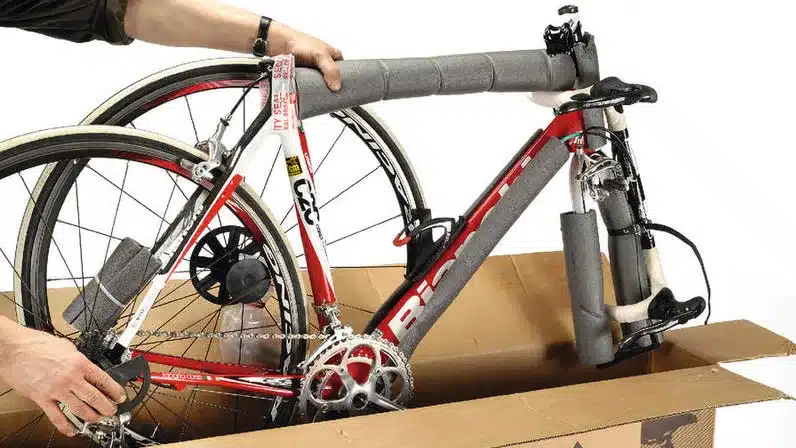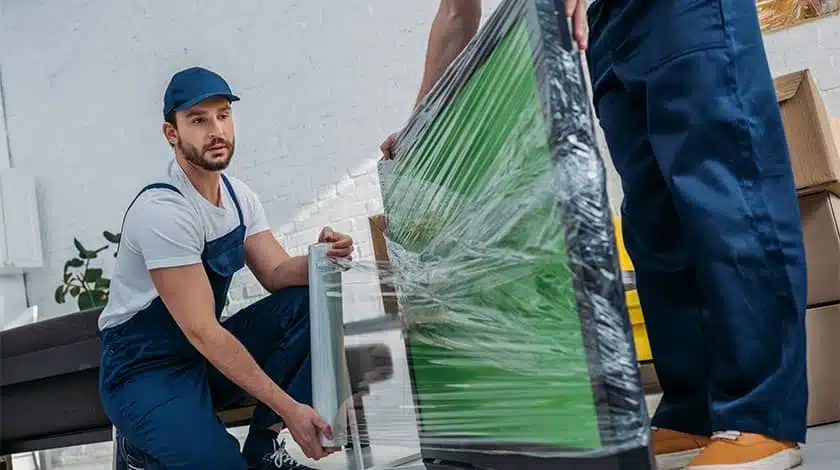How to Pack a Bike for Moving – As you know, moving from one place to another is very stressful, especially when it involves your favourite item, like your bike. If you are worrying about how to pack your bicycle and how to avoid any damage, then you are in the right place. In this blog, we provide you with a step-by-step explanation of the process in detail.
Table of Contents
ToggleBikes are the most important vehicle for most people because it is the greatest way to turn human energy into motion. It also helps in cardiovascular exercise. Unenclosed and left unattended on a mobile device, bikes can become damaged when moving off-road or cross-country. To enjoy long-distance travel and to maintain your bike’s peak performance condition, it is essential to keep your bike in top shape.
Bike Disassembly
In order to accommodate your bicycle in its moving crate, it is necessary to eliminate any protruding components. Your objective is to reduce the size of your bike to a compact, slender form. Start by disassembling the following bike components during your relocation:
- Handlebars and Pedals
- Saddle and seat post Wheels
- Racks, fenders, and decorations, Derailer and hanger
Be certain to have the appropriate disassembling tools and sanitise your bike with a gentle cloth before disassembling it. It is advisable to acquire the requisite instruments, including a pedal and torque wrench, a set of hex wrenches, and pliers, from your preferred bike store, as they will undoubtedly prove beneficial in the future.
Collect the necessary items
The main step is to collect the main materials to make sure that your bike is packed properly before moving. Here we provide you with the necessary items to prepare before moving:
- One cardboard bike crate
- One compact container for the bicycle components that have been disassembled
- Foam padding, bubble coverings, foams, cloths, or rags are all examples of cushioning materials.
- 10 tube protectors (optional)
- One fork protector
- Protectors for the axles of four wheels
- Cable links
- Carpet dagger or scissors
- Zip bands
- Transparent packing tape
- Additional cardboard sections
- Permanent marker
If you don’t find out any of these things that I mentioned, then no need to worry. You can contact your local bike store near your home. Additionally, you can also contact a nearby removalist for your move.
Disassembled bike components that are cushioned and boxed

It is extremely useful to take each part of your bike apart for protection. Make sure you wrap all of the parts that you have taken off in bubble wrap or packing paper to protect your bike components during shipping.
Frame
Cover the painted part of the frame with a foam pipe liner, and strap it to the component with a cable tie or tape. If you want to strengthen the foam, then you should wrap it in cardboard.
Accessories
Also, make sure you remove all important bike accessories, which include bottle cages, racks, fenders, and put all these things in a secure, closed box. Tape or cardboard may be used to attach the box to the bike.
Seatpost and Seat
Wrap your Seat and seatpost in packing tape in bubble wrap, or foam first, and when the seat and seatpost are removed, put them in the carton. Tape the seatpost to prevent it from shifting and damaging other parts of the bike.
Disc Brakes
Be cautious when packing and removing the disc brakes. Take off all fasteners, pad them, and put them back on the bike with tape or zip ties if it is possible. Place all accessories removed from the brakes in one container to reduce any risk of lost parts. The pad spreader divides the disc brake during transport.
Rear Derailleur
The rear derailleur on your bike is highly susceptible to damage. You must protect this area. Gradually change the small chainring and the biggest rear sprocket. Then wrap the rear derailleur and chain and secure with packing tape or zip ties, if you are able.
Pedals and Handlebars
The stem on the handlebars of your bike must stay on when the handlebars come off. Once you take the handlebars off, put the hardware (nuts, bolts, and panels) back on the handlebars to help protect all components during disassembly. Cables should not be stressed, but leave the transfer levers for the brakes and gears on the handlebars.
Make sure your pedals are padded and secured before you place them in the case. Put all the items folded up inside the bike crate to prevent swaying
Wheels
Make sure you don’t wrap both ends of the axle with anything that will let them just fall into the box. When you are packing your front wheel, you need to cover the wheels or use the padded wheel bags provided at the bike shop, by your removalists.
Wrapping it Up
In the above details, we give you proper information about how to pack a bike when moving. We hope that this information will help you to move your bike very easily without any damage. Need a removalist to move your bike locally? Singh Movers and Packers is your one-stop shop for any type of move, from a local move to an interstate move.
FAQs
Question – How to pack a bike when moving?
Answer – To pack a bike, you simply cover all the long and important parts of your bike with cardboard. Make sure that your cardboard has enough space to fit the main part, that is wheels.
Lastly, also consider that your cardboard is thick whenever you pack a bike, because it will help your cardboard to stay strong when transported in a vehicle.
Question – How hard is it to box a bike?
Answer – In many situations, when putting a bike in a bike-specific box, you will need to remove both the front and rear wheels to fit every part of the bicycle into the box, whereas, with most cardboard bike boxes, you should only need to remove the front wheel.
Question – Does the bike have a gearbox?
Answer – Most two-wheeled manual transmissions use a sequential gearbox. Most motorcycles (except scooters, city bikes, commuter bikes, etc.) shift gears (which they are increasingly adding 5-6 gears) with a foot-shift lever.




